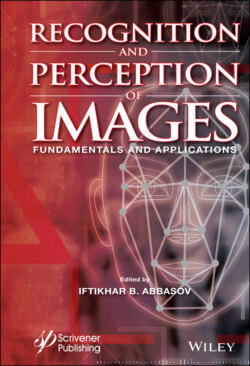Читать книгу Recognition and Perception of Images - Группа авторов - Страница 38
1.5 Visual Illusions
ОглавлениеIllusion is a false or distorted perception of a phenomenon. Visual (optical) illusions arise when the visual perception does not correspond to the physical, real properties of an external stimulus. Illusions can be considered distorted perception of the surrounding reality, and thus differ from hallucinations, which are a false perception that occurs in the absence of external conditionality. According to the mechanism of occurrence, visual illusions can be divided into the following types:
– arising from the imperfection of the optical properties of the eye;
– resulting from the action of the entire visual system, including the brain;
– dynamic illusions arising from a change in the position of the stimulus in space or in time.
The survey of [King et al., 2017] is dedicated to the analysis of distortions of perceiving the visual illusions in case of confusional insanity. People suffering from confusional insanity may experience the anomalies at the different stages of processing of visual information. Generally, such people are unperceptive to the illusions of high level. Moreover, they may be influenced by some illusions of initial stage.
Let’s consider the illusion of “Hollow mask” [Website youtube.com, 2020] taken as an example. The mask is turned both clockwise and counterclockwise upon view (the successive steps are shown in Figure 1.5.1). In fact, the mask is turned one way. However, for the majority of observers the mask changes the direction of movement at some point of time. At the start of movement the convex front side of the mask doesn’t make a difficulty for the visual system and consciousness. When the mask begins to move toward the back side (the backing may be observed through the hollow eye pits) our brain turns it out because the convex side is more familiar for us. We didn’t use to see people with concave faces. In the course of further turning the brain turns out and restores the usual convex form of the mask at the crossing line once again. However, the brain of scizophrene cannot be deceived; that’s why the mask is still hollow for it after turning.
Figure 1.5.1 Sequenced frames of illusion of ‘Hollow mask’ [Website youtube.com, 2020].
It is necessary to admit that visual illusion doesn’t have the same effect on some people who are under the influence of alcohol and narcotics. The initially given illusion was found out in the case of hollow mask of famous actor Charlie Chaplin. The inversion of reality and processing of visual information belong to the functioning properties of the brain of a healthy man. The study of principles of brain activity is a quite difficult field. There are no definitive explanations even to this date. What is more real – the perception of real-world view by the brain of scizophrene (without processing) or the visual information processed by the brain of a healthy man?
